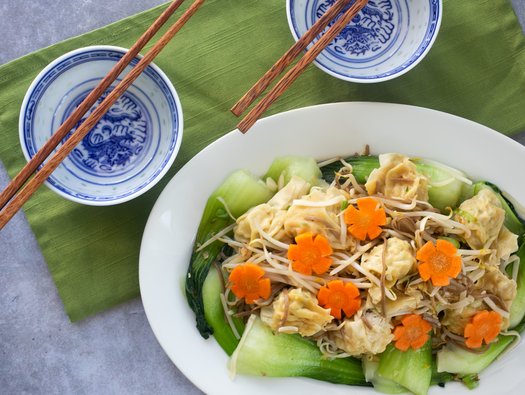You can prepare some elements of this recipe in advance to save time:
Wonton Filling: Prepare up to 24 hours ahead and store in a covered bowl in the fridge. Wrap and boil the wontons just before serving. Fully-formed raw wontons should be boiled soon after wrapping to avoid the pastry disintegrating from the moist filling.
Batch-preparing wontons for the freezer: Prepare uncooked wrapped wontons in bulk. Place the uncooked wrapped wontons spaced out on a flat tray and freeze. Once frozen, you can store the frozen wontons into freezer bags. To cook the frozen wonton, simply boil from frozen for approximately 10-15 minutes until the filling is piping hot and the skin is translucent.

